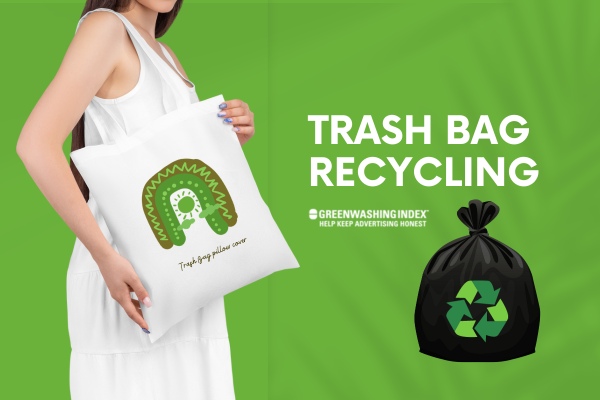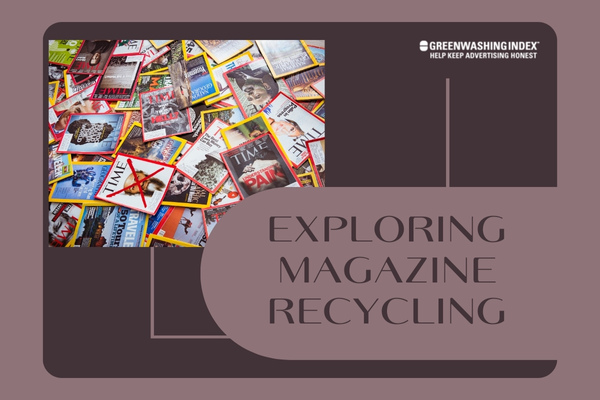Ever wondered about Tupperware recycling and whether those handy containers in your kitchen can be re-purposed? If you’re like me, you’ve probably got a stash of them holding leftovers in your fridge right now. But as we get more eco-conscious, the question nags at us: what happens to our Tupperware when it’s no longer fit for our kitchens? Stick around because we’re going to dig into this topic and uncover the truth that so few of us know!
Tupperware has been around forever, keeping our food fresh and making meal prep easier. But is Tupperware recyclable? The simple answer is yes; it can be recycled! However, not all facilities accept these items, mainly due to their durable composition intended for long-term use rather than easy disposability. See, recycling programs vary from place to place, so while some centers might take your old containers with open arms, others might turn them away.
What You’ll Discover Here
- No-nonsense insights into Tupperware recycling
- Simple signs that show when to replace your containers
- Eco-friendly habits for Sustainable food storage
- Upcycling ideas: Turn old containers into new treasures!
- Alternatives that make green living with Tupperware a breeze
What Material Makes Up Your Tupperware?
When I think about my kitchen, one of the first things that comes to mind is Tupperware. These handy containers are everywhere, keeping food fresh and making sure my leftovers stay tasty for days. But what exactly is Tupperware made of? Let’s dive deeper to understand it better.
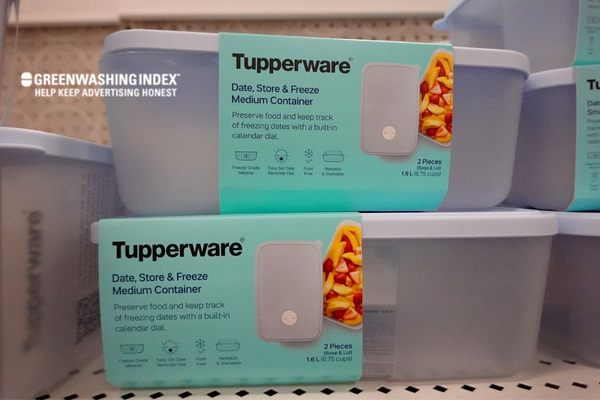
Tupperware’s Composition
Back in the day, when Tupperware first entered our kitchens, it was known for being quite durable. The main reason? It’s mostly made from a type of plastic called polyethylene. Besides polyethylene, some Tupperware products also contain polycarbonate or polypropylene.
Polyethylene is pretty tough stuff. It comes in different forms – some kinds are more flexible, while others are stiffer and stronger. That explains why some Tupperware feels soft and bendy while other pieces can handle a drop or two without cracking.
Now, let’s talk about polycarbonate. This is another kind of plastic used in products that need to be even stronger and more durable than regular polyethylene ones. It adds extra toughness so that your containers can resist high temperatures – like when you warm up food in them.
Then there’s polypropylene. This material has got its own set of superpowers; it doesn’t react with most chemicals, which means flavors and colors from food don’t stick to it or stain it easily – that’s really good for keeping your curry one day and your yogurt the next without mixing up the tastes!
Tupperware was designed for long-term use from the get-go – hence, these strong materials were chosen carefully so you wouldn’t have to replace them often.
What does this all mean for Tupperware recycling, though? Well, every material has its own rules when it comes into contact with recycling processes. For instance, not all recycling centers will accept all types of plastics because they might not have the right equipment to process them correctly.
In any case, understanding what makes up our favorite kitchen companions gives us a clearer picture of how we can contribute to sustainable food storage solutions, which will ultimately help us live a greener life with less plastic waste troubling our lovely planet!
Also Read: Mattress Disposal: Easy Steps for Eco-Friendly Solutions
Decoding Symbols of Sustainability
When you are on a journey to be kind to the planet, you quickly learn how each little action counts. One of the simple things I do is look for clues that tell me whether what I am using in my kitchen is good for the earth. These clues often come in the form of symbols, and Tupperware products have them, too. Let’s dive into what these symbols mean for Tupperware recycling.
The Clues to Tupperware Recycling at Your Fingertips
When I look at the bottom of a plastic container, I sometimes find a triangle made up of three arrows. This is the universal recycling symbol. If you have ever seen this on your Tupperware, you might have asked yourself: “What does it mean? Can I recycle it?” Let me explain what these symbols mean and how they relate to Tupperware.
Firstly, inside that triangle, there is often a number between 1 to 7. This number is super important because it tells us what type of plastic the container is made from. Each number matches up with a specific kind of plastic material.
Now, when we talk specifically about Tupperware products and Tupperware recycling, we must keep an eye out for these numbers:
- Number 5 – This means the plastic is polypropylene. Most Tupperware containers are made from this stuff. It’s pretty strong and can handle hot and cold temperatures well.
- Numbers 3 or 7 – Sometimes, you might see these numbers on your Tupperware, too. They are different types of plastics and may not be as easy to recycle as number 5.
But those triangles and numbers aren’t just cool shapes or random digits – they’re clues! These clues help us understand how to join in on green living with Tupperware by doing our part in Tupperware recycling.
Let’s say your favorite lunch box has the number 5 in this recycle sign. That’s good news! It suggests that many recycling programs will happily take it and give it new life as something else – like maybe garden furniture or bins.
However, don’t forget that not all places have the same rules for recycling – some areas can do more than others. So, my best advice? Always check with your local authorities to see what their rules are when it comes to things like recycling options for Tupperware or any other plastics you want to get rid of responsibly.
In short, these symbols under our kitchen friends are much more than doodles; they’re little guides helping us keep Mother Earth smiling by telling us about sustainable food storage choices – like opting for eco-friendly containers instead of throwaway ones!
Understanding these signs ensures our journey towards an environmentally conscious kitchen doesn’t end up taking a wrong turn, leading into an unnecessary waste lane!
Remember, each piece of Tupperware we decide correctly about – whether reusing or choosing proper Tupperware recycling – makes one less item, contributing to plastic waste reduction efforts in landfills across the globe. Let’s make green living part of everyday cooking fun; let’s be mindful when storing leftovers next time!
Also Read: Hydroponics Greenhouse Essentials: Grow Greener Today!
Navigating Through Recycling Challenges
When you hear the word Tupperware, you probably think of sturdy, trusty containers that keep your food fresh. But when those containers get old or damaged, what do you do with them? Let’s talk about how easy (or not) it is to recycle Tupperware and why this process can be tricky.
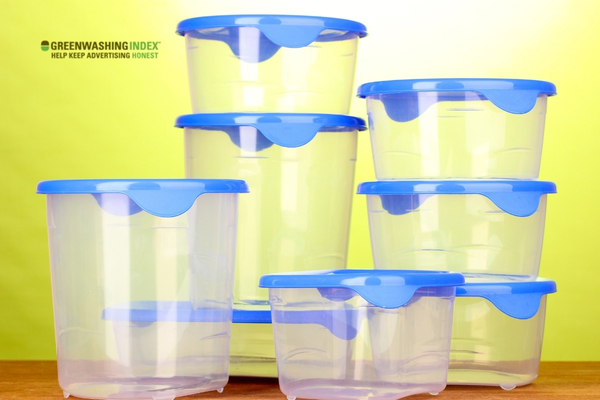
When Can You Recycle Your Trusty Containers?
Not all plastic gets a second life in the recycling bin. Why is this so? Well plastic comes in many different types, and not all of them are familiar with the recycling process. With Tupperware, it’s kind of a mixed bag—some pieces can be recycled while others face barriers.
First off, Tupperware isn’t made from just one kind of plastic. It might have numbers on it like 3 or 7 – these are codes that tell us what type of plastic we’re dealing with. The trouble starts when these plastics demand special methods to break them down and recycle them properly.
Recycling plants have different capabilities, too – they’re not all built the same. Some can handle a wide range of plastics; others have narrow limits and may only take your common drink bottles or milk jugs.
Next comes another hurdle: condition matters! If your Tupperware is super clean with no stains or smells – great! But if it’s greasy or covered in last week’s spaghetti sauce odors… well, that’s a problem. Recycling centers need clean materials to work with so they don’t mess up an entire batch of recycling stuff.
Add to this mix any labels or seals— if these aren’t removed before recycling time comes around—they might spoil the chances even more.
So here’s the truth: Tupperware recycling is possible, but it’s got its challenges – know what type you’ve got and make sure it’s squeaky clean!
Is Your Old Faithful Container Welcome at Recycling Centers?
This part gets interesting because not every curbside program will welcome your old Tupperware like an old friend coming home! It depends on where you live because different towns have different rules for their recycling programs.
You often will find that regular curbside bins say ‘No’ to items like our tough container pals unless they’re certain plastics like number 1 or 2 (those are usually more welcome). Another thing – just throwing things in there without sorting could cause more harm than good, causing perfectly recyclable items to end up in landfills instead!
So what can you do? One solution could be finding special drop-off locations dedicated to Tupperware recycling where they’re equipped to deal with these harder-to-recycle plastics.
Local environmental agencies sometimes have ‘take-back’ programs or special events where they collect stuff like electronics…or your good old food containers! Checking online for local “green” events may surprise you because sometimes there’s a hidden drop-off hero in town ready for your used-up goods.
Green living with Tupperware takes some effort, but learning about how we can be more eco-friendly, even when saying goodbye to our storage buddies, shows our commitment to sustainable practices and plastic waste reduction! Let’s keep learning and doing better by exploring those wonderful world-saving options available around us!
Safeguarding Health With Wise Use
When we think about our homes, it’s important to consider not just how things look but also how they impact our health and well-being. In the heart of any home – the kitchen – this rings especially true.
We store our family’s food in various containers, with Tupperware being a popular one for generations. But even when these items have been kicking around from way back, we need to stop and ask: Is it really still safe to use them?
Is Yesterday’s Old-Timer Still Safe for Today’s Meals?
When it comes to my kitchen, I always think about safety. We often keep our old Tupperware because it reminds us of good times or just because it still looks okay. But is it really safe to use these vintage containers to store our food today?
Here are some points about why we need to think carefully about using old Tupperware:
- Chemicals Over Time: The big worry with old Tupperware is that it might release chemicals into food. Back in the day, making Tupperware involved different stuff than now. Some of those materials might not be good for us.
- Changes in Standards: Things have changed a lot regarding what we know is safe and what isn’t. Years ago, nobody thought twice about what the container was made of. Today, we’re much more careful because science has told us that some plastics can leak harmful things like BPA.
- Wear and Tear: If you’ve used your Tupperware a lot over the years, it could be scratched or damaged. This wear and tear means there are tiny spots where bad chemicals can come out and mix with your food.
- Heat and Plastic: Have you ever put plastic containers in the microwave? Heat can make the leaching problem worse. That means if your old Tupperware has seen too many trips to the microwave or dishwasher, it might not be as safe anymore.
So what should you do? Here’s what I recommend:
- Look for Damage: Check if your old containers have scratches or changes in color.
- Think About Age: If they’re from before 2010 (when companies started dropping BPA), consider replacing them.
- Use Them Wisely: If you decide to keep using them, avoid putting hot foods or liquids inside.
- Recycle if Possible: When in doubt, recycle them – but check if they’re recyclable first!
Remembering these points doesn’t mean throwing everything away right now, but rather, think smartly about how you store food safely for yourself and your family!
Also Read: Plastic Bag Recycling: Easy Steps for a Clean Planet
When It’s Time To Say Goodbye
Knowing when to let go of old things can be tough, especially when they’ve been part of our daily lives. But when it comes to food storage, using containers that are clean and in good shape is key to keeping our meals safe. Let me share some signs that show it’s time for your food containers to take their final curtain call.
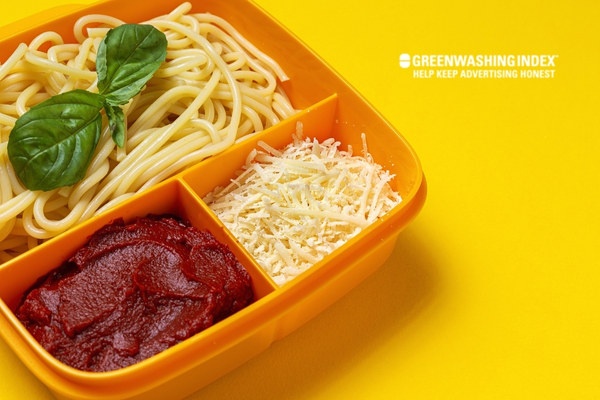
It’s hard to part with things we’ve used for a long time. But when it comes to storing food, it’s important to know when it’s time for your old containers to go. Here are the clear signs that tell you your storage containers need replacing:
First, look for any stains on your Tupperware. If you see yellow or red patches that won’t wash off, even after a good scrub, it might be time to say goodbye. Stains are not just ugly; they can be a sign that the plastic is breaking down.
Next, pay attention to how your Tupperware smells. If there is a constant bad odor that doesn’t go away even after washing, you should consider getting rid of the container. Odors could mean that food residue has seeped into the plastic.
Another sign is warping or melting. This can happen if Tupperware gets too hot, like in the microwave or dishwasher, over time. Warping can make lids fit poorly, which means they won’t seal correctly anymore – this isn’t good if you want to keep your food fresh.
Missing lids can also be a hassle. We’ve all had those moments where we can’t find the right lid! It might be simple forgetfulness, but if you start losing them often, maybe because they don’t fit right anymore or got cracked somewhere along the way – it’s probably best to replace them.
Click-clack sounds closing tightly mean freshness sealed in. But when those snaps and clicks fade, and lids loosen up — well, my friends — air sneaks in and takes freshness out!
One last thing: check any date stamps on your containers! If there’s a date before 2010 stamped on them, consider getting new ones because older plastics might have different standards, which aren’t as safe today.
Keeping an eye out for these signs will help ensure your kitchen remains not only tidy but safe as well for food storage! Remember: when Tupperware shows these signs, it’s doing its final dance before retirement — take notice and start looking at sustainable food storage options like newer eco-friendly containers designed with both utility and our planet in mind!
Goodbye, dear old pal of pasta leftovers; farewell, comrade container who braved countless microwave wars… Let’s welcome some fresh soldiers into our environmentally-conscious kitchen brigade!
Also Read: How Much Energy Does A Solar Panel Produce? Find Now!
Toward Responsible Disposal
As times change, we’re getting wiser about the trash we make. We’re looking at ways to toss less and save more – Earth, that is. One big question on our minds: what to do with all that Tupperware when it’s seen better days? Let’s talk about sending our plastic friends on a new journey, whether they get a second life or take a trip to the recycle bin.
Preparing your Plastic Pals for Their Next Journey – Recycled or Reused!
When it’s time to say goodbye to your trusty containers, don’t just chuck them in the trash! There are better ways to part ways:
- Clean Them Well: First things first, you gotta make sure they’re clean. No leftover food bits or sticky stuff.
- Check for Codes: Flip them over and look for the recycling triangle. The number inside tells you if they can be recycled.
- Find a Spot: If they can be recycled, search online for nearby places that’ll take them. Some spots only accept certain numbers.
- Give Them Away: Maybe someone else can use them! Offer them up on social media or in community groups.
- Get Crafty: Turn craft mode on! Maybe those old Tupperware pieces could be planters for your windowsill herbs?
- Store Supplies: Use them to keep things like screws, beads, or ribbons sorted in your hobby room.
Remember these tips and give those containers a chance at a new life!
Eco-Friendly Picks For Foodies – Alternatives Worth Exploring!
When it comes to storing food, many of us might think of Tupperware first. But let’s talk about something important today – helping our planet by picking eco-friendly storage options. It’s good to care for Earth, right? So, I want to tell you about some great choices that are kinder to the environment.
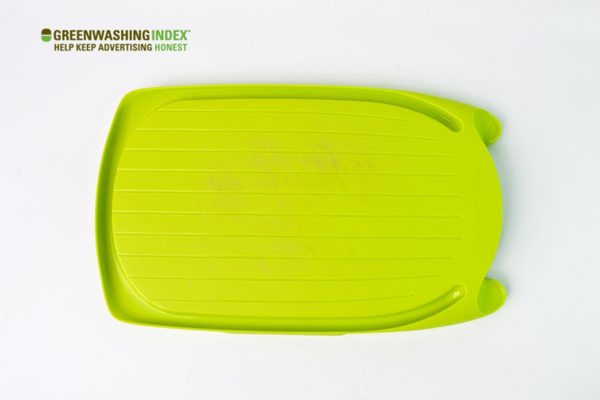
Choosing Assured Sustainability Over Convenient Plastics
We know plastics can hurt nature. They stick around too long and can harm animals and plants. That’s why we should think about using things that nature likes better. There are materials out there that don’t cause much trouble when we’re done using them. Let me share some of these with you:
- Bamboo: Did you know bamboo is a smart choice? It grows super fast and doesn’t need any nasty chemicals to keep bugs away. We can make bowls and boxes out of bamboo to keep our snacks safe. And the best part? When bamboo has done its job, nature can break it down easily.
- Stainless Steel: This stuff is strong! Containers made from stainless steel last a very long time. They don’t rust or break easily, so you won’t have to buy new ones often. And if they ever do wear out, guess what – they can be recycled!
- Glass: Glass jars aren’t just for looking pretty on the shelf; they’re super handy for keeping leftovers in the fridge or cupboards too! Plus, glass can be used again and again without losing its spark or making food taste funny.
Now let’s think bigger picture:
Reduce What You Use:
Before we buy new things, let’s ask ourselves if we need them at all! Sometimes, we have items at home that will do just fine.
Reuse Like There’s No Tomorrow:
If something is still good enough to use – keep using it! Just because it isn’t shiny new doesn’t mean it isn’t useful.
Recycle with Care:
When an item has reached the end of its life with us, let’s make sure we recycle it if possible. This turns old stuff into new stuff, which is basically like magic for saving resources!
So there you go – a quick rundown of how choosing different containers might help our lovely green Earth stay nice and healthy! Remember: being kind to our planet means being kinder to ourselves in the long run, too. Let’s make sure our future meals don’t come with a side order of guilt by picking these eco-friendly storage options!
FAQs
Can I just toss my old plastic ware in regular blue bins?
No, not all Tupperware is safe for those blue recycling bins. It’s better to check with your local recycling program to see if they take them.
Where can I take my stack of non-recyclable plastic storage?
For plastics that can’t go in the bin, look for a special drop-off center that accepts them or try eco-friendly stores that might offer recycling services.
Is there any risk associated with reusing very old kitchen plastics?
Yes, very old or damaged plastics may leak chemicals into food. It’s smarter to replace them for safety.
A quick guide to local ‘Tupperware recycling’ facilities—Where should you start?
Start by visiting your town or city’s waste management website or call them up. They’ll guide you about Tupperware recycling spots near you.
Conclusion
Through this journey of exploring Tupperware recycling, one thing stands clear: we must walk the tightrope of practicality and responsibility with care. While these faithful containers serve us well in keeping our food safe and fresh, their end-of-life management deserves as much thoughtfulness. Embracing Tupperware’s inherent durability prolongs its usefulness, but when time takes its toll, we stand at a crossroads of recycling challenges and innovative upcycling opportunities.
Eco-conscious behaviors call for our attention to recycling symbols and the consideration of less apparent sustainability aspects. It demands an awareness that not all plastics can return back to the cycle effortlessly. If continued use poses health risks or recycling centers turn away from our old containers, it’s up to us to repurpose or choose alternatives mindfully.
Let’s shoulder the responsibility of reducing plastic waste with every storage decision we make—whether that’s opting for evergreen sustainable food storage options or becoming creative with worn-out Tupperware at home.


